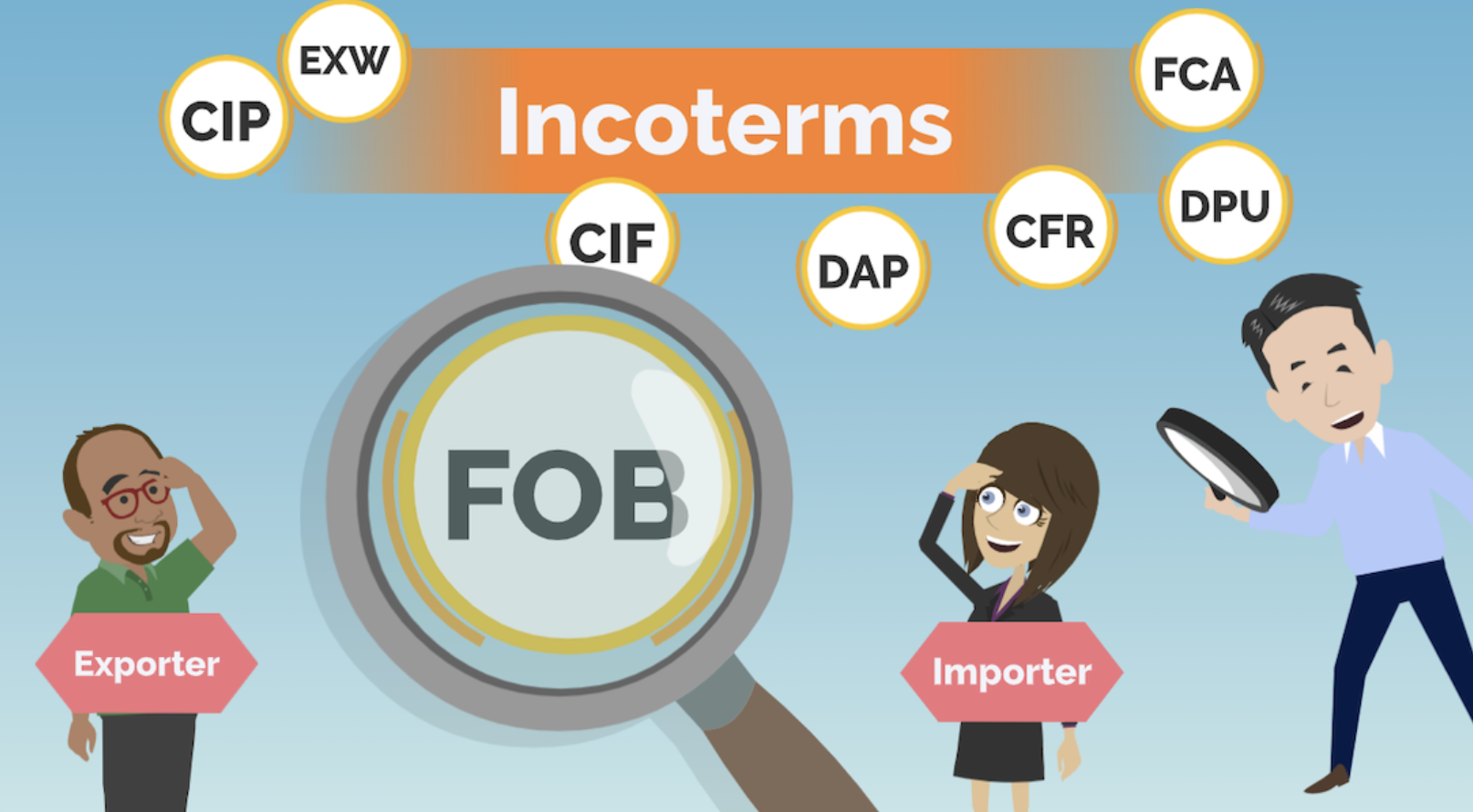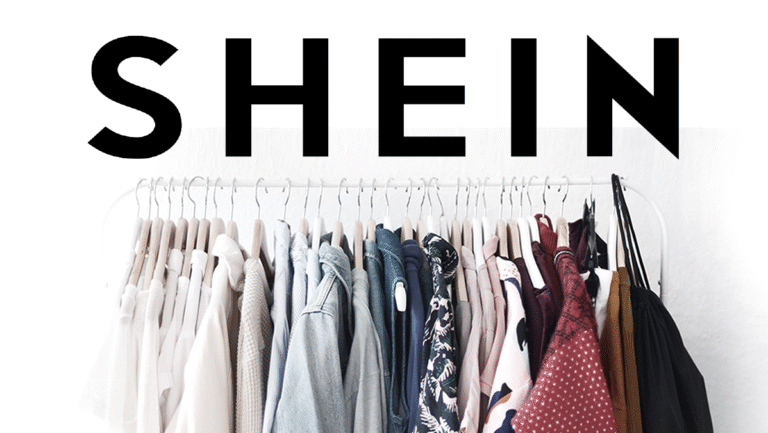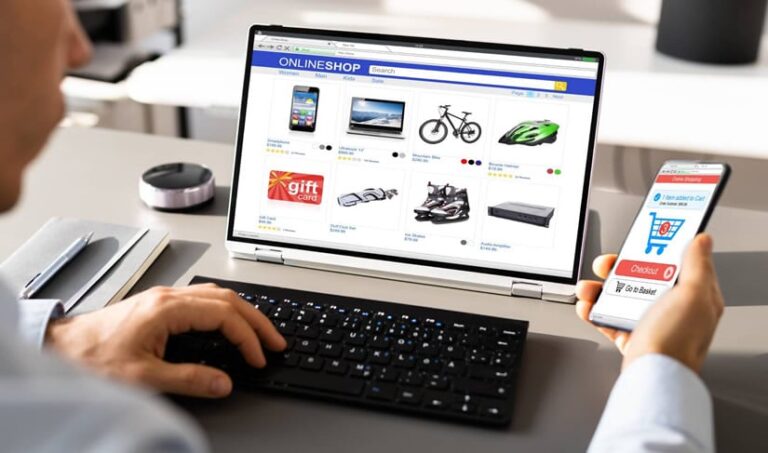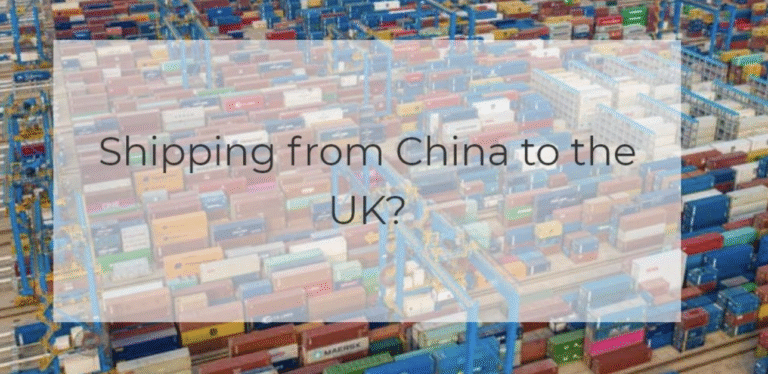What Does FOB Mean in Shipping? Full Guide to Free on Board (2025)
Introduction to FOB in Shipping
When you’re diving into international trade or importing goods, one term you’ll definitely encounter is FOB—short for Free on Board. But what exactly does FOB mean in shipping?
It’s one of the most widely used Incoterms, shaping everything from cost allocation to who carries responsibility for the goods at different stages of transport.
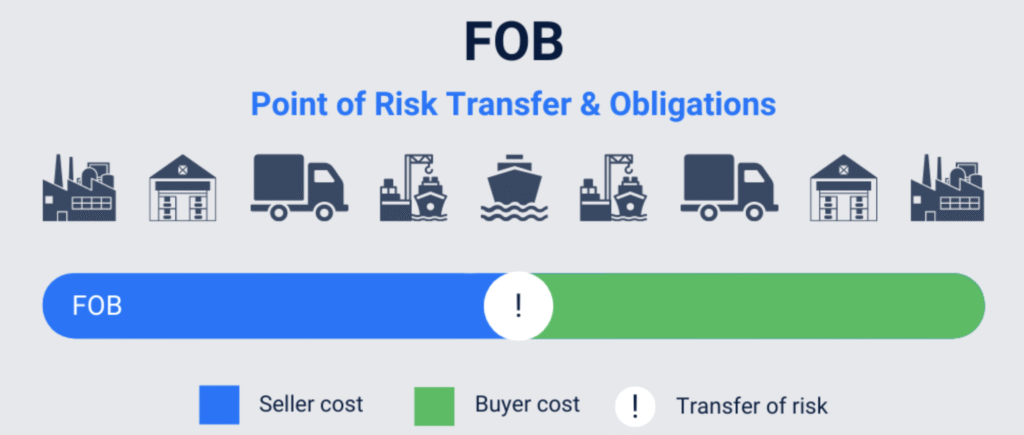
Whether you’re a seasoned importer or just starting your ecommerce journey, understanding the FOB term is essential for smooth, legal, and profitable operations.
Table of Contents
What Does FOB Mean in Shipping Terms?
FOB, or Free on Board, is a term used to indicate when the responsibility and ownership of goods transfer from the seller to the buyer.
It determines:
- Who pays for shipping costs
- Who is responsible for goods in transit
- Where the transfer of risk occurs
For instance, in a FOB Origin agreement, the buyer assumes responsibility as soon as the goods leave the seller’s premises. In a FOB Destination agreement, the seller retains responsibility until the goods arrive at the buyer’s location.
Why Understanding the FOB Term Is Crucial for Global Trade
With international shipping becoming more complex—thanks to tariffs, customs regulations, and freight delays—getting Incoterms right is not optional. If you misunderstand what FOB covers, you could:
- End up paying unexpected costs
- Face delays at customs
- Miss out on insurance claims if something goes wrong
Properly using the FOB term in your shipping contracts helps protect both buyer and seller from financial and legal surprises.
Breaking Down the FOB Term
Definition of FOB (Free on Board)
At its core, FOB (Free on Board) refers to the point in the shipping journey where ownership and liability shift from the seller to the buyer. This term is legally recognized under the Incoterms (International Commercial Terms), established by the International Chamber of Commerce (ICC).
There are two main types:
- FOB Shipping Point (Origin)
- FOB Destination
We’ll dive into the difference shortly.
The Origin of FOB and International Commerce Terms (Incoterms)
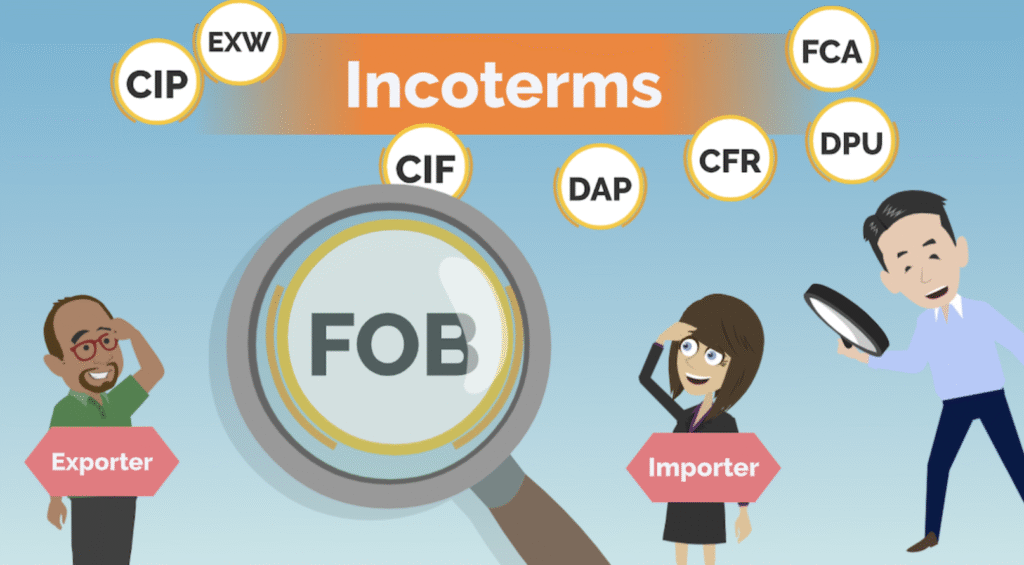
The FOB term originated from maritime trade, where it was essential to know when goods were loaded onto a ship. Today, Incoterms, including FOB, are used across various transport modes but still hold special relevance in sea freight.
Incoterms were developed by the ICC in 1936 and have been updated several times to reflect modern trade practices. The latest revision, Incoterms 2020, remains in use globally and includes 11 different rules—FOB being one of the most critical.
Types of FOB – Origin vs. Destination
FOB Shipping Point (Origin)
In a FOB Origin agreement:
- The buyer takes ownership once the seller ships the goods.
- Responsibility shifts when the goods are loaded onto the carrier.
- The buyer handles shipping, insurance, and customs from that point onward.
Example: A buyer in Los Angeles purchases goods from a manufacturer in Shanghai under FOB Origin. Once the shipment leaves the port in Shanghai, any damage, delays, or loss is the buyer’s problem.
FOB Destination
With FOB Destination:
- The seller maintains ownership and responsibility until the goods arrive at the buyer’s location.
- The seller pays for shipping and handles risks during transit.
Example: A seller in Berlin ships under FOB Destination to a buyer in Paris. The seller is responsible for freight, insurance, and customs until the buyer receives the goods.
Responsibilities Under FOB
Buyer’s Responsibilities
In a FOB Origin agreement, the buyer must:
- Arrange for freight from the origin point
- Cover shipping insurance (if desired)
- Handle customs clearance and duties
In a FOB Destination deal, the buyer only assumes responsibility once the goods arrive.
Seller’s Responsibilities
For FOB Origin, the seller:
- Packs and labels the goods
- Delivers them to the shipping port
- Loads the goods onto the carrier
In FOB Destination, the seller additionally:
- Pays for transport
- Manages all logistics until final delivery
Transfer of Risk and Cost
Here’s where things get tricky. The exact point of transfer of risk depends on which FOB term is used. If not specified, legal battles can occur. Always ensure your contracts clearly define the FOB point.
Practical Examples of FOB in Action
Real-World Scenario of FOB Origin
Let’s say a U.S.-based retailer orders 10,000 phone cases from a supplier in Shenzhen, China. The agreement is FOB Shenzhen Port.
- The supplier delivers the goods to the Shenzhen port and loads them onto the ship.
- Once the goods are on board, responsibility transfers to the U.S. buyer.
- If the ship faces a storm and the cargo is damaged, the buyer bears the loss.
Key Takeaway: Under FOB Origin, the seller’s responsibility ends once the goods are on the carrier.
Real-World Scenario of FOB Destination
Now imagine a Canadian fashion brand ordering 2,000 jackets from a manufacturer in Bangladesh. The contract specifies FOB Toronto Warehouse.
- The seller handles all shipping arrangements, including insurance.
- Only when the goods arrive at the Toronto warehouse and are signed off does the responsibility transfer.
- If anything goes wrong during the shipping process, the seller is liable.
Key Takeaway: In FOB Destination, the seller is responsible until the goods reach the final delivery point.
Differences Between FOB and Other Shipping Terms
Understanding how FOB meaning in shipping compares to other Incoterms is vital for effective contract negotiation.
FOB vs CIF (Cost, Insurance, and Freight)
| Feature | FOB | CIF |
|---|---|---|
| Insurance | Buyer’s responsibility | Seller includes insurance in the price |
| Risk Transfer | When goods are on the ship | When goods are on the ship |
| Cost Coverage | Buyer covers freight | Seller covers freight and insurance |
Use CIF if you want the seller to handle everything until the goods are shipped. Use FOB if you want control and potentially lower costs.
FOB vs EXW (Ex Works)
| Feature | FOB | EXW |
|---|---|---|
| Seller’s Obligation | Deliver goods to port | Make goods available at warehouse |
| Buyer’s Role | Takes over at port | Responsible for full logistics |
| Risk Transfer | On ship loading | At seller’s warehouse |
EXW gives the buyer maximum control—but also maximum responsibility.
FOB vs DDP (Delivered Duty Paid)
| Feature | FOB | DDP |
|---|---|---|
| Seller’s Obligation | Ends at port or delivery location | Handles full delivery including customs |
| Buyer’s Role | Takes over after FOB point | Minimal responsibilities |
| Cost | Buyer handles post-shipment | Seller includes all costs |
DDP is the easiest for buyers—but it’s also the most expensive option.
Advantages of Using FOB
For Buyers
- Cost Control: Buyers can negotiate better shipping rates.
- Greater Flexibility: Choose preferred freight and insurance services.
- Clear Risk Transfer: Once loaded, the goods are the buyer’s responsibility.
For Sellers
- Limited Liability: In FOB Origin, liability ends at the port.
- Streamlined Logistics: Sellers don’t need to handle international freight.
- Competitive Pricing: Lower responsibilities allow for leaner quotes.
Common Mistakes to Avoid with FOB Shipping
Misinterpreting Responsibility
One of the most frequent errors is assuming FOB always means the same thing. FOB Origin and FOB Destination assign responsibilities very differently. Always clarify:
- Who books the shipment?
- Who pays for freight and insurance?
- When does the liability shift?
Failing to Clarify Incoterms in Contracts
Vague contracts that just say “FOB” without specifying origin or destination can cause major disputes. Always use the full term like:
- FOB Shanghai Port (Incoterms 2020)
- FOB Buyer’s Warehouse, New York
This removes ambiguity and helps in case of legal issues.
How to Choose the Right Incoterm for Your Shipment
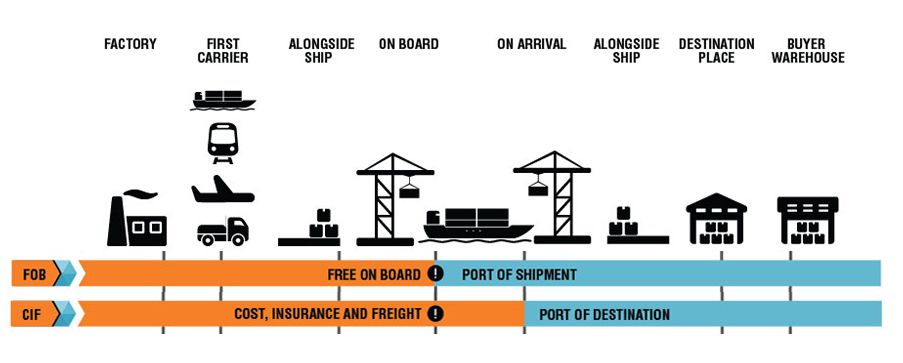
Here’s a simple decision-making process:
- Are you comfortable managing shipping logistics?
- Yes → Go with FOB Origin
- No → Consider FOB Destination or CIF
- Do you want cost control over freight?
- Yes → FOB Origin
- No → Let the seller manage it
- Do you have a freight forwarder or agent?
- Yes → FOB Origin is ideal
- No → Use FOB Destination until you’re more experienced
Table: FOB vs Other Common Incoterms
| Term | Shipping Responsibility | Risk Transfer Point | Insurance Included? | Best For |
|---|---|---|---|---|
| FOB | Buyer (after goods are on board) | Port of shipment | No | Experienced importers |
| CIF | Seller | Port of shipment | Yes | New importers |
| EXW | Buyer (from seller’s warehouse) | Seller’s premises | No | Advanced buyers |
| DDP | Seller (full delivery chain) | Buyer’s premises | Yes | Buyers who want convenience |
Conclusion
FOB, or Free on Board, is one of the most powerful tools in global shipping. It defines when costs and responsibilities change hands—so both buyer and seller are protected. Understanding the FOB meaning in shipping helps you avoid costly misunderstandings and gives you greater control over your logistics strategy.
Always be specific in your contracts, know the differences between origin and destination terms, and compare FOB with other Incoterms to make the smartest decision for your trade.
Got questions? Reach out to your freight forwarder or legal advisor to ensure your FOB deals are water-tight.
FAQs About FOB meaning in shipping
1. What’s the biggest risk in FOB shipping?
If you’re using FOB Origin and something happens during transport, you—the buyer—are responsible. Insurance is key.
2. Does FOB mean the buyer pays for freight?
In FOB Origin, yes. In FOB Destination, the seller typically pays until delivery.
3. Can FOB terms vary by country?
The general rules are global under Incoterms, but always check local trade agreements and practices.
4. What happens if goods are damaged under FOB?
Responsibility lies with whoever holds risk at the point of damage. In FOB Origin, that’s the buyer.
5. Is FOB still used in 2025?
Absolutely. FOB remains one of the top Incoterms for sea freight due to its clarity and balance of responsibilities.

